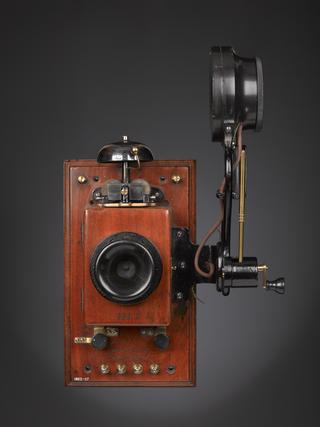
Macadie Keysender No 15
- Made:
- 1930-1940 in United Kingdom

Macadie Keysender No 15 made by General Electric Co. Ltd. Also cardboard box.
The Keysender was a device that allowed telephone operators to dial telephone numbers faster.
Although automatic telephone systems were already in use in the 1930s, companies and other big organisations often still had their own manual switchboard, where a human operator would connect calls from the organisation to outside telephone numbers. There were no keypad phones at the time, so the operator would have to enter the telephone numbers on a rotary dial, which were slow to operate.
Around 1930, the British Post Office engineer Donald Macadie developed the Keysender to speed up the work of busy switchboard operators. An electro-mechanical device, the Keysender allowed an operator to dial a number simply by pressing the appropriate keys, much like today’s keypad phones, cutting the time it took them to deal with a call from as much as 12 seconds to as little as 3 seconds. Macadie's Keysender design was manufactured in a number of versions by the Post Office and the General Electric Company.
Details
- Category:
- Telecommunications
- Object Number:
- Y1991.46
- Materials:
- metal (unknown), glass, plastic (unidentified) and fabric
- Measurements:
-
overall: 155 mm x 119 mm x 157 mm,
- type:
- telephone exchange
- credit:
- Purchased From Phillips




